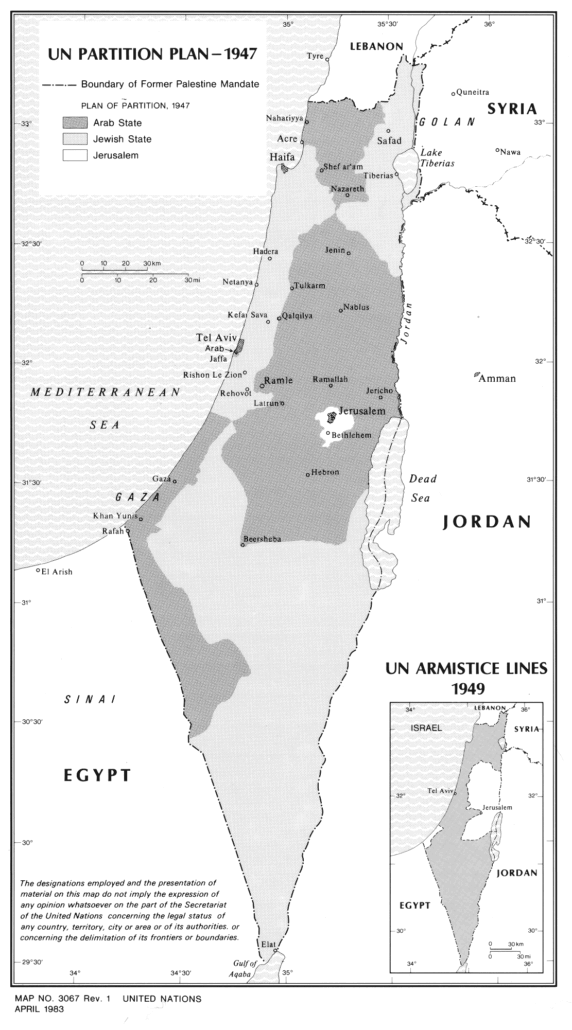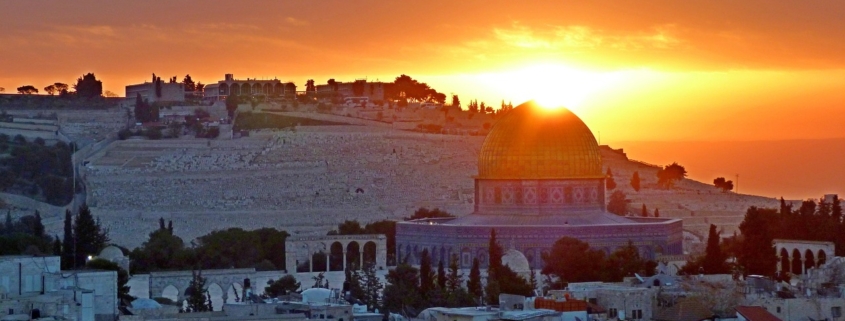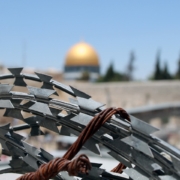What is the United Nations Partition Plan?
Topic of Study [For H2 History 9174 Students]:
Paper 1: Conflict and Cooperation (1948-2000)
Section B: Essay Writing
Theme III Chapter 1: Arab-Israeli Conflict (1948-1979)
Historical Context: The end of the British mandate of Palestine
Between 1922 and 1947, Great Britain assumed control of the Palestinian territory, as part of its mandate authorised by the League of Nations. As mentioned in the Balfour Declaration, the British government expressed support for the creation of a ‘national home for the Jewish people’ even though it did not specify the territorial delineation of Palestine.
As Jewish immigration from Europe took place between 1922 and 1947, the Arab-Jewish tensions (see Arab revolts of 1936-39) grew and escalated by the onset of the Second World War. Even the British was not spared of the escalating violence, pressuring the government to seek an viable solution for the two groups.
In the years between the 1929 Wailing Wall riots, which had shaken the Zionist leadership’s complacent faith in eventual Arab acceptance of the Zionist enterprise, and the outbreak of the Arab Revolt, informal negotiations took place between Ben-Gurion and Musa Alami. […]
Ben-Gurion seemed to come to a more sober understanding of the Arab position: “There is a conflict, a great conflict. There is a fundamental conflict. We and they want the same thing: We both want Palestine. And that is the fundamental conflict.”
An excerpt taken from “The Palestinian People: A History” by Baruch Kimmerling and Joel S. Migdal.
Enter the United Nations Special Committee on Palestine (UNSCOP): The Partition Plan
In April 1947, Britain referred the ‘Palestine matter’ to the United Nations – an inter-governmental organisation that took over the mantle of the defunct-League of Nations. In May 1947, the UNSCOP examined the matter. This committee consisted of eleven members: The Netherlands, Peru, Sweden, Uruguay, Yugoslavia, Canada, Australia, Czechoslovakia, Guatemala, India and Iran.
In summary, the UNSCOP concluded that the British Mandate should be terminate and that Palestine should be partitioned into two independent states.
The Partition Plan was as follows:
- The proposed Jewish state: Land around Tel Aviv and Haifa, Negev, Jezreel and the Hule Valleys. The Jewish state was to be comprised of about 5,500 square miles and the population was to be 538,000 Jews and 397,000 Arabs.
- The proposed Arab state: Gaza strip, Nablus, Galilee, Hebron and Beersheba. The Arab states was to be compromised of 4,500 square miles and the population was to be 804,000 Arabs and 10,000 Jews.
- The Jerusalem city was to be administered as an international zone.
On 29 November 1947, the United Nations General Assembly (UNGA) obtained a two-thirds majority, adopting Resolution 181. Both the United States and the Soviet Union supported the Partition Plan, whereas Britain abstained.
It is important to note that the Palestinian Arabs and Jews were divided on the Partition Plan, which may have explained why tensions persisted even after 1948.
The question of the Palestinian position regarding the UN partition plan which was adopted on the 29 November 1947 is not as clear and sharp as it is customary to portray it in most of the historical sources dealing with the issue. In the Palestinian camp there was a variety of views which were not expressed in the ultimate position, which crystallized and was perceived by the international community as an absolute rejection of the partition resolution.
The Palestinian people was forced to pay an unbearable price for their acquiescence of the decision of a short-sighted leadership. The terrible tragedy which befell them demolished their hopes to realize their national ambitions and to live in a state where they would enjoy sovereignty and independence like all other nations.
An excerpt taken from “The Two-State Solution: The UN Partition Resolution of Mandatory Palestine – Analysis and Sources” by Ruth Gavison.

Join our JC History Tuition to learn more about Conflict and Cooperation. The H2 and H1 History Tuition feature online discussion and writing practices to enhance your knowledge application skills. Get useful study notes and clarify your doubts on the subject with the tutor. You can also follow our Telegram Channel to get useful updates.
We have other JC tuition classes, such as JC Math Tuition and JC Chemistry Tuition. For Secondary Tuition, we provide Secondary English Tuition, Secondary Math tuition, Secondary Chemistry Tuition, Social Studies Tuition, Geography, History Tuition and Secondary Economics Tuition. For Primary Tuition, we have Primary English, Math and Science Tuition. Call 9658 5789 to find out more.











